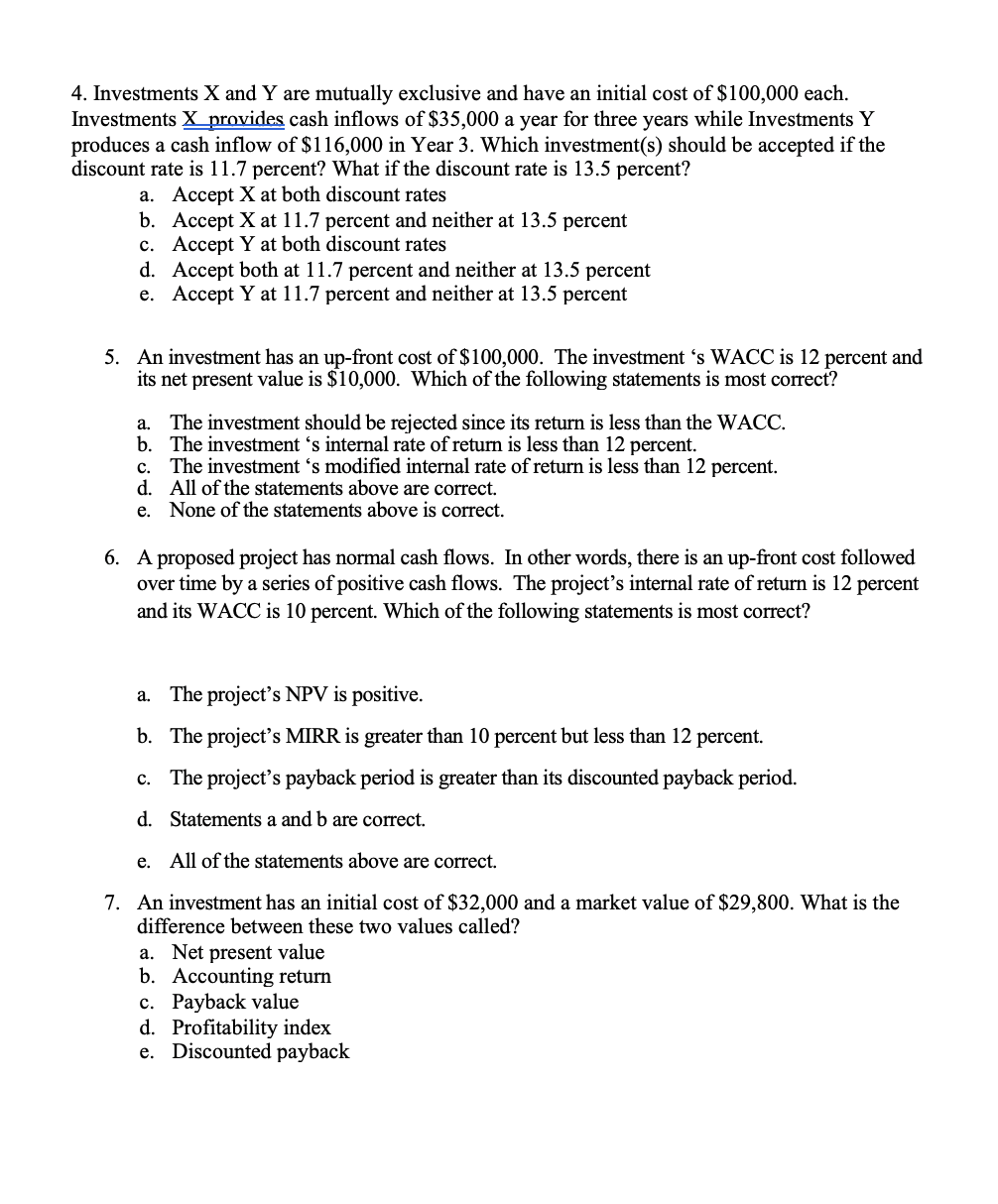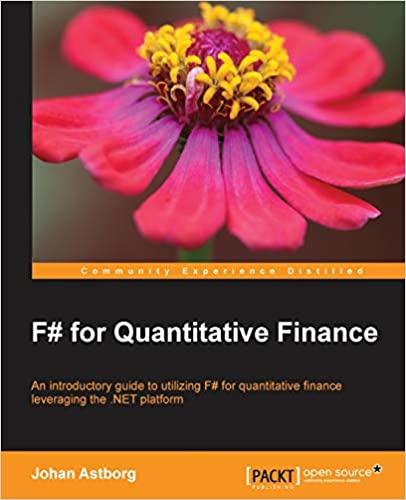Question
. Investments X and Y are mutually exclusive and have an initial cost of $100,000 each. Investments X provides cash inflows of $35,000 a year
 . Investments X and Y are mutually exclusive and have an initial cost of $100,000 each. Investments X provides cash inflows of $35,000 a year for three years while Investments Y produces a cash inflow of $116,000 in Year 3. Which investment(s) should be accepted if the discount rate is 11.7 percent? What if the discount rate is 13.5 percent? a. Accept X at both discount rates b. Accept X at 11.7 percent and neither at 13.5 percent c. Accept Y at both discount rates d. Accept both at 11.7 percent and neither at 13.5 percent e. Accept Y at 11.7 percent and neither at 13.5 percent
. Investments X and Y are mutually exclusive and have an initial cost of $100,000 each. Investments X provides cash inflows of $35,000 a year for three years while Investments Y produces a cash inflow of $116,000 in Year 3. Which investment(s) should be accepted if the discount rate is 11.7 percent? What if the discount rate is 13.5 percent? a. Accept X at both discount rates b. Accept X at 11.7 percent and neither at 13.5 percent c. Accept Y at both discount rates d. Accept both at 11.7 percent and neither at 13.5 percent e. Accept Y at 11.7 percent and neither at 13.5 percent
Step by Step Solution
There are 3 Steps involved in it
Step: 1

Get Instant Access to Expert-Tailored Solutions
See step-by-step solutions with expert insights and AI powered tools for academic success
Step: 2

Step: 3

Ace Your Homework with AI
Get the answers you need in no time with our AI-driven, step-by-step assistance
Get Started


